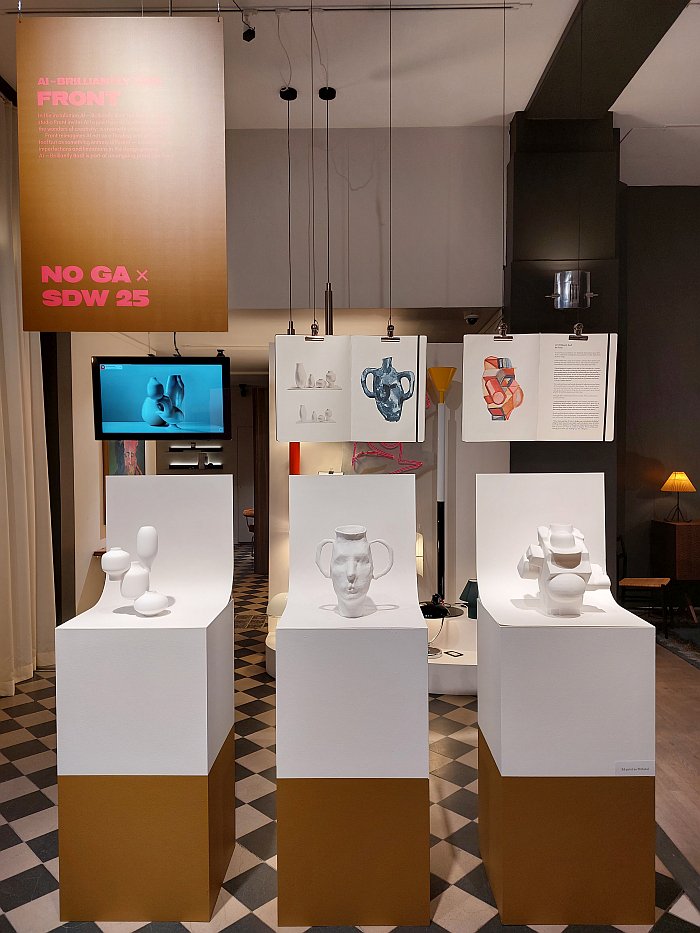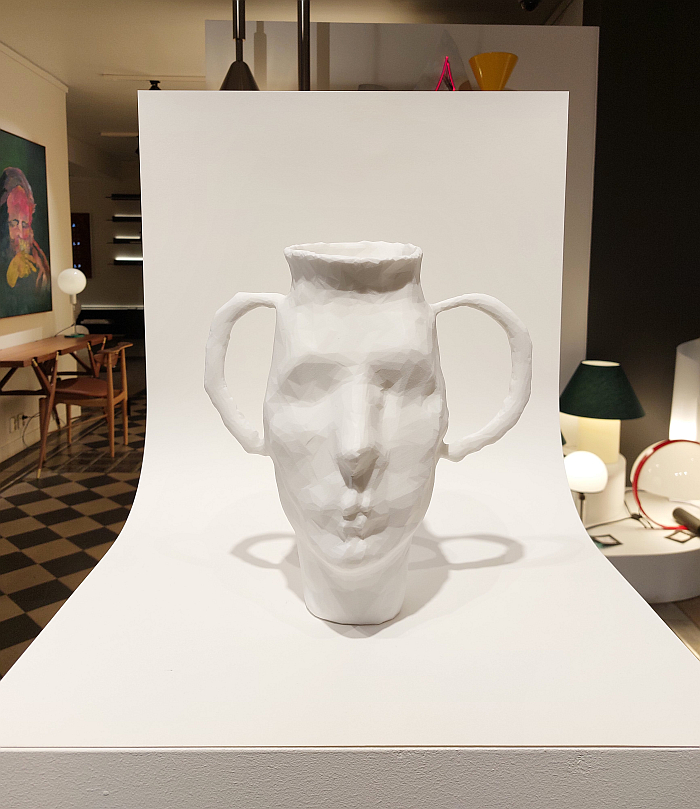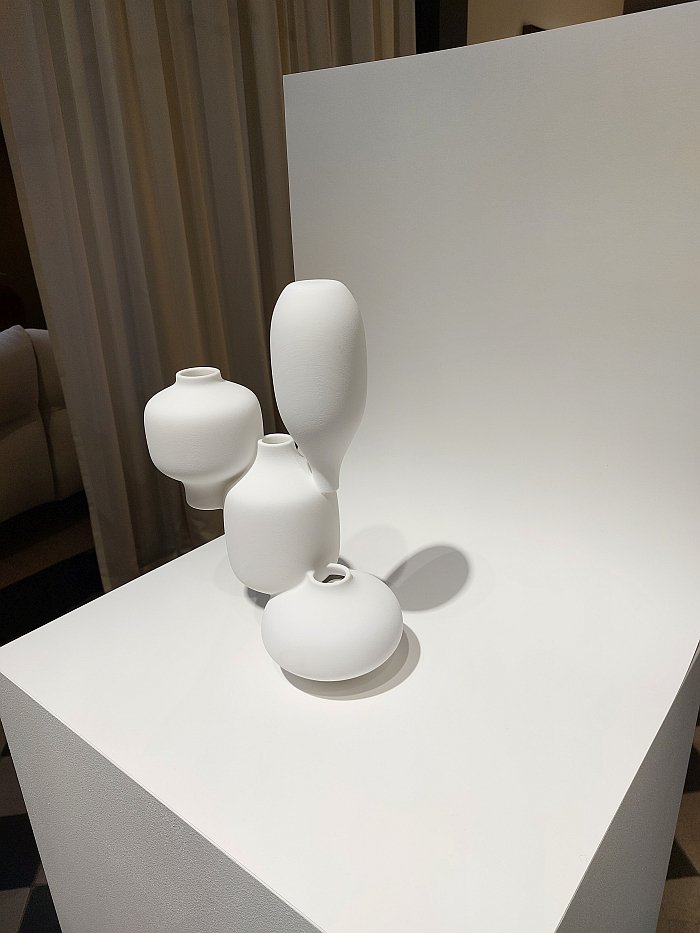
Over the years Stockholm based design studio Front a.k.a. Anna Lindgren and Sofia Lagerkvist (and, back in the day, also Katja Sävström and Charlotte von der Lancken) have oft employed chance as a design tool, have oft employed an essentially surrealist approach to design: they have, for example, let a rat gnaw wallpaper by way of creating a pattern, they've they let a fly buzz around a light bulb to create lamp shades, they've frozen an explosion in time to create a lounge chair, they've simulated wind blowing a vase over to create a vase as dynamic, vital and organic as the flowers that stand in it were when still in contact with the earth, while more recently they've 3D scanned forest floors and employed the results as found, as nature defined them.
A practice that also underscores how technology, for all emerging technology, has informed and instructed their work; technology, considerations, often highly speculative considerations, on the use of emerging technology in the design of objects of daily use, that has seen Front, for example, sketch furniture directly in space, design furniture in and for virtual environments, while one of their first commercial products, the bin Bin for Materia, visually informed you how full it was, and, thus, arguably, represents smart technology in an age before smartness. Or at least what is popularly considered smart today, time will tell the degree to which we err.
A body of work that not only underscores how over the years Front have, when not necessarily directly but certainly through the positions and arguments embodied in their work, sought to explain that design from Sweden, design from Scandinavia, isn't that which it was 120 years ago, that Sweden, Scandinavia, have moved on, alone the commercial furniture and furnishings industries have remained trapped in their restrictive handcrafted wooden bubble, as could be experienced elsewhere at Stockholm Furniture Fair 2025 and Stockholm Design Week 2025; but a body of work that also constructs a very good argument that if there is one design studio who have the credentials, the experience, the critical distance, the cynicism, the candour, the nous, the wit, to approach the novel possibilities enabled through the use of AI in and for design and to come to valid, objective, instructive conclusions, it's Front.
Only very rarely do Front take full control of the design process, there is invariably a partner involved with whom Front cooperate, albeit a partner with whom one can't reason as with a human partner, can only influence to a degree that you believe you control, but ultimately don't. A control you in any case would rather not have, desirous as you are to see where your partner takes the process. But very aware that you are creating design not art, that the result must be utilitarian and relevant for contemporary and future society. And if that partner is a rat, an explosion, the wind, an AI platform, makes, arguably, little difference. The question is how one communicates and interacts with that taciturn, unforthcoming, partner, how one develops trust, openness and a common perspective with a partner intent on doing their own thing, driven by alternative impulses and motivations. A partner who doesn't care what you think and want. Who is unable to care about what you think and want. And how one reacts when one can't find that basis for a meaningful cooperation.
Exactly how Front are currently approaching AI, where and how they see AI as a meaningful tool, and where and how they see it less so, couldn't be completely gleaned from the three objects presented in context of AI - Brilliantly Bad! at Stockholm's Nordiska Galleriet, objects arsing from Anna and Sofia feeding AI systems with their sketches of potential objects and letting the AI devise the physical object, for that it was all too brief, all too quick; however, as a presentation it did whet the appetite, clearly announced that earnest work is underway in the Front studio and that before all too long we will all be able to experience in more depth and less hurry where Front's reflections on, and use of AI, has taken them both in terms of their appreciations of the relationships between AI and design, relationships between AI and designers, and also in terms of the physical expressions of those appreciations.
Work that should help elucidate for us all the possibilities, dangers, advantages and disadvantages of AI in and for design, help us better approach the question if we should be employing AI in design, if AI is a partner for and in design, or if that would be a mistake and/or waste of time, much as over the years Front's research and questioning has time and again helped us all approach better appreciations of not just possible ways forward, but also of paths to ignore.
More details on Front can be found at www.frontdesign.se
Stockholm Design Week 2025 has now ended, details on what you missed, on the event in general and when the 2026 edition is being staged, can be found at https://stockholmdesignweek.com

